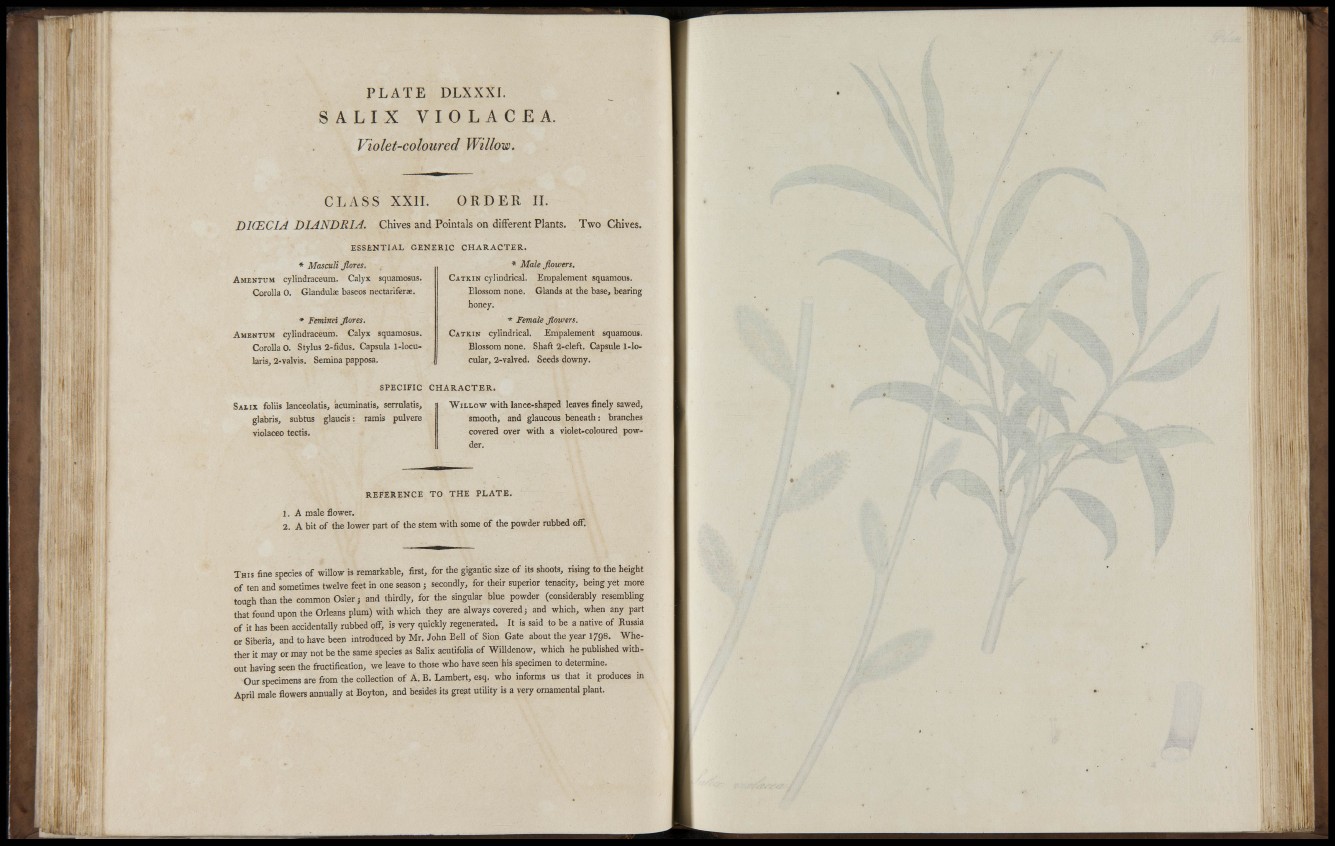
. . f t
' 1
K: -iiah
ai!
i _
ji
; ' .1
« '
1 i:^
I I
;
PLATE DLXXXJ.
S A L I X VIOLACEA.
Violet-coloured Willow.
CLASS XXIL ORDER IL
DICECIA DIJNDRIA. Chives and Poiiitals on different Plants. Two Chives.
ESSÊNTIAL GENERIC CHARACTER.
* Masculi flores.
AMENTUM cylindraceum. Calyx squamosus.
Corolla 0. Glandulae báseos nectariferae.
• Feminei flores.
A M E N T U M cylindraceum. Calyx squamosus.
Corolla O. Stylus 2-fidus. Capsula 1-locularisj
2-valvis. Semina papposa.
* Male flowers.
C A T K I N cylindrical. Empalement squamous.
Blossom none. Glands at the base, bearing
honey.
* Female flmvers.
C A T K I N cylindrical. Empalement squamous.
Blossom none. Shaft 2-cleft. Capsule l-locular,
2-valved. Seeds downy.
SPECIFIC CHARACTER.
S x t i x foUis lanceolatis, iacuminatis, serrulatis, WiLLOwwith lance-shaped leaves finely sawed,
smooth, and glaucous b glabris, subtus glaucls : ramis pulvere eneath: brandies
violaceo tectis. covered over with a violet-coloured powder.
REFERENCE TO THE PLATE.
1, A male flower.
2. A bit of the lower part of the stem with some of the powder rubbed off.
T H I S fine species of willow is remarkable, first, for the gigantic size of its shoots, rising to the height
of ten and sometimes twelve feet in one season ; secondly, for their superior tenacity, being yet more
tough than the common Osier; and thirdly, for the singular blue powder (considerably resembling
t h a t f o u n d u p o n the Orleans plum) with which they are always covered; and which, when any part
of it has been accidentally rubbed off, is very quickly regenerated. It is said to be a native of Russia
or Siberia, and to have been introduced by Mr. John Bell of Sion Gate about the year 1798. Whether
it may or may not be the same species as Salix acutifolia of Willdenow, which he published without
having seen the iroctification, we leave to those who have seen his specimen to determine.
Our specimens are from the collection of A. B. Lambert, esq. who informs us that it produces in
April male flowers annually at Boyton, and besides its great utility is a very ornamental plant.
Í !
i ti M'i'
ri
I '